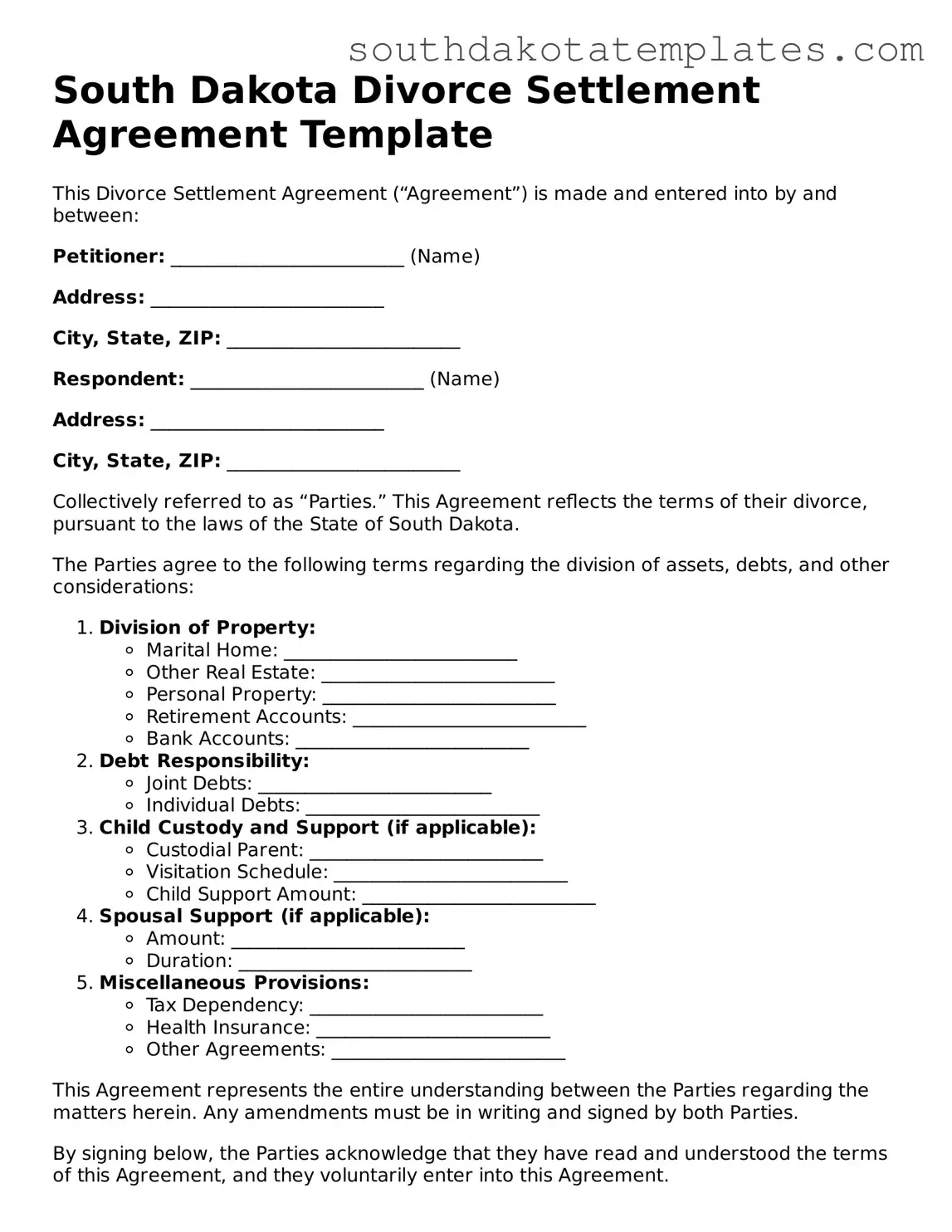Free South Dakota Divorce Settlement Agreement Document
The South Dakota Divorce Settlement Agreement form is a legal document that outlines the terms of a divorce between two parties. This form addresses various aspects such as asset division, child custody, and support arrangements. Completing this form is an essential step in finalizing a divorce in South Dakota.
To proceed with your divorce settlement, fill out the form by clicking the button below.
Get Divorce Settlement Agreement
